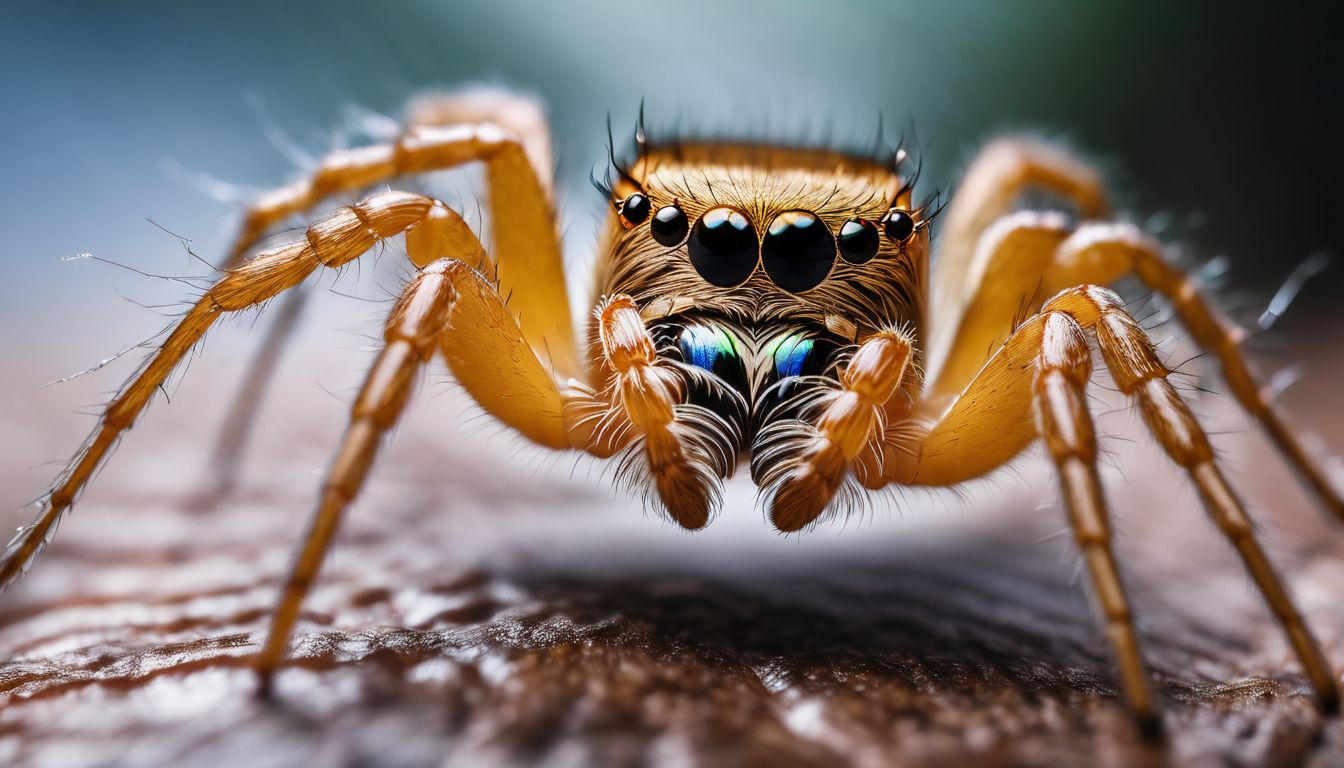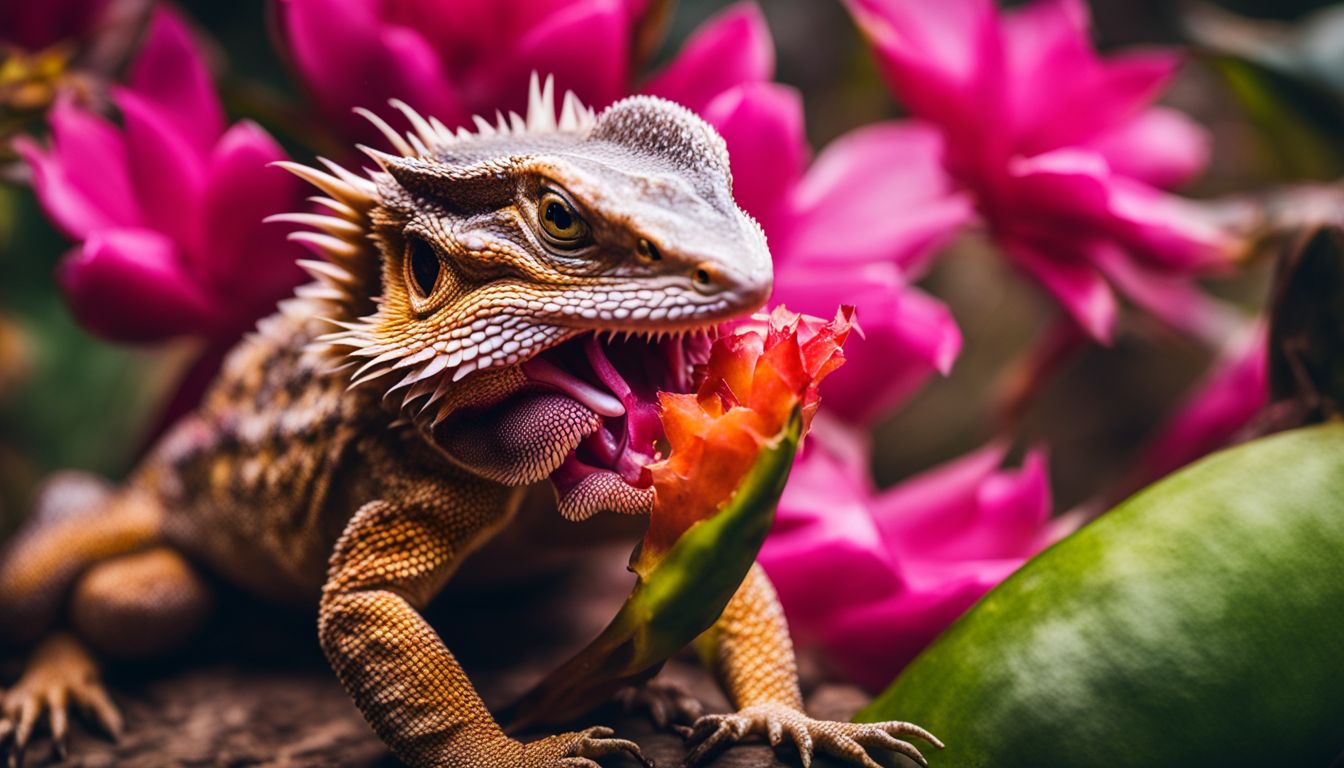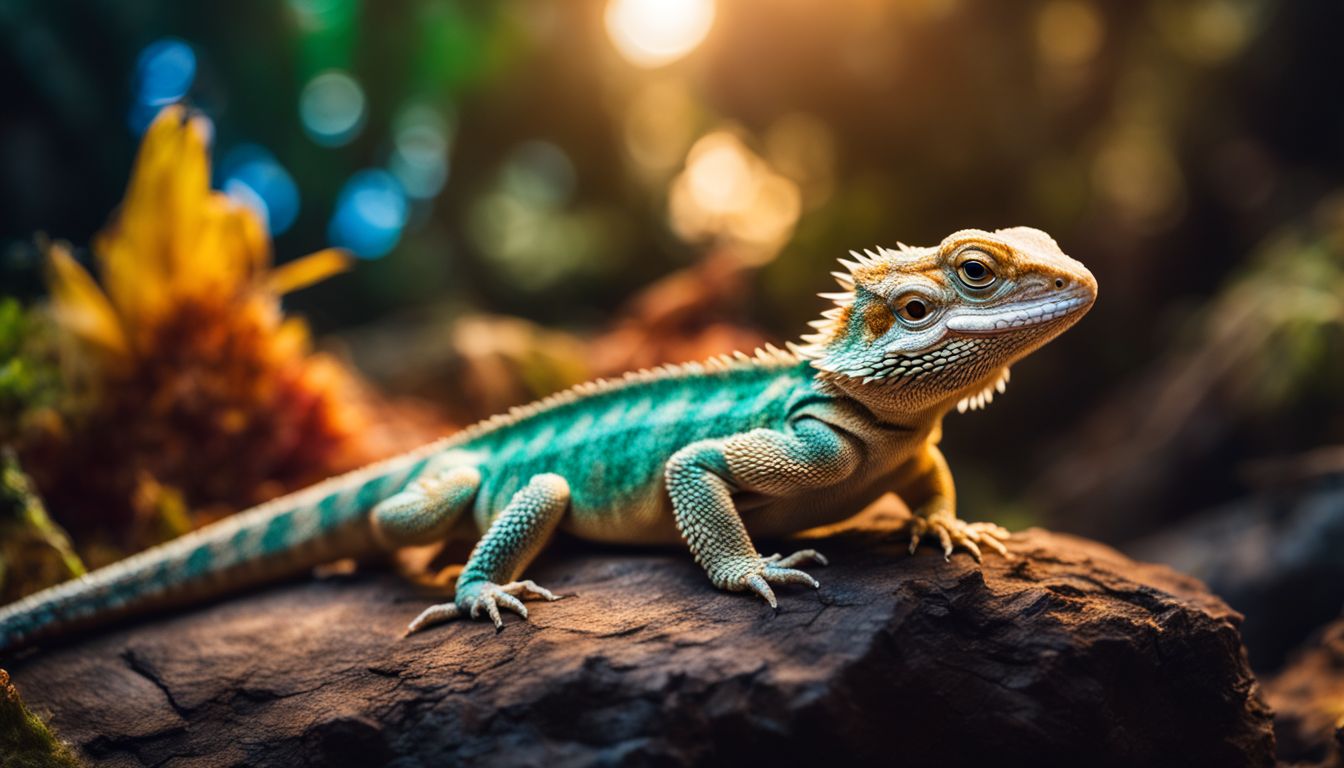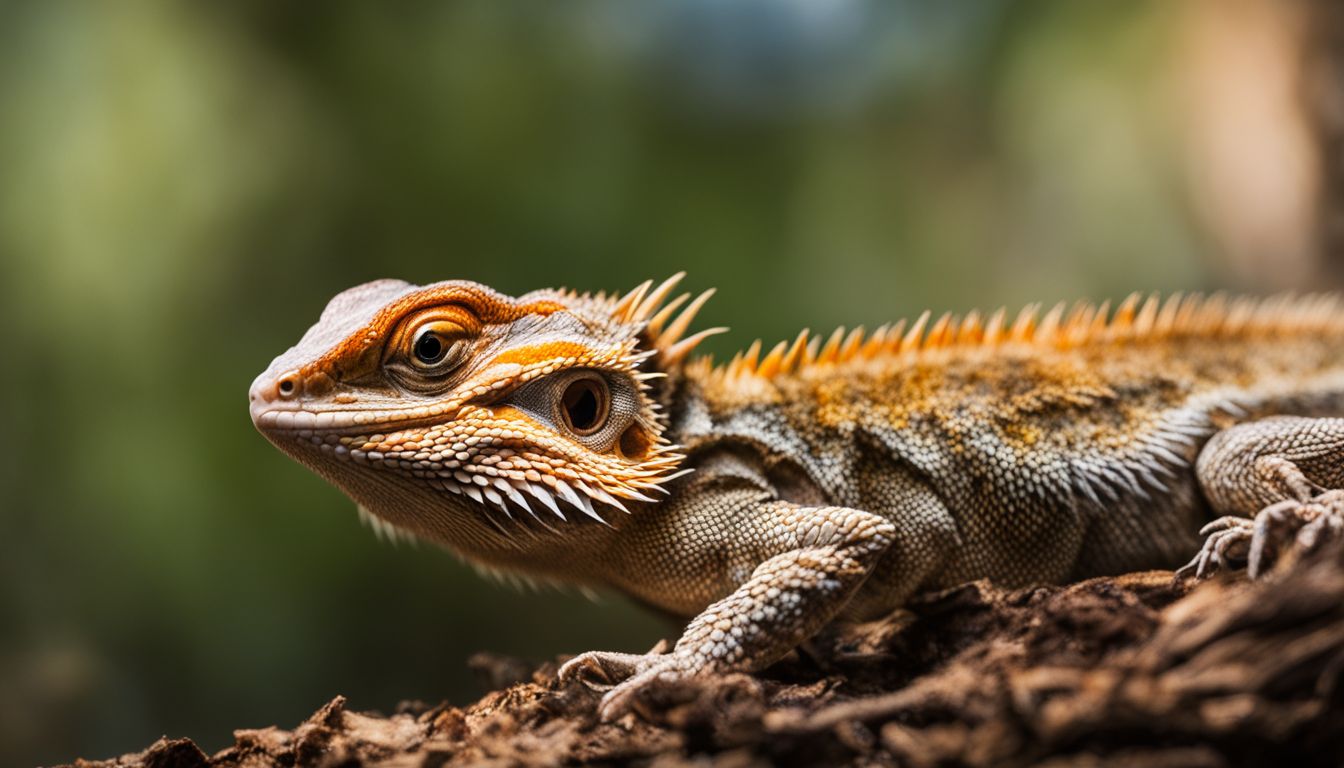A lot of people think spiders have teeth, but that’s not exactly true. They do not have teeth like we do to chew their food. Instead, spiders use parts called chelicerae and fangs to catch and eat prey.
The fangs are what they use to stab into their victims. These pointy parts can also deliver venom from glands inside a spider’s head. This is how many spiders take down the insects they want to eat.
But even little spiders with teeny-tiny fangs can bite if they need to defend themselves.
So, while it may seem like spiders might have teeth for biting, it’s really their fangs doing the work when it comes time for them to eat or protect themselves!
Understanding Spider Mouthparts: Chelicerae and Fangs
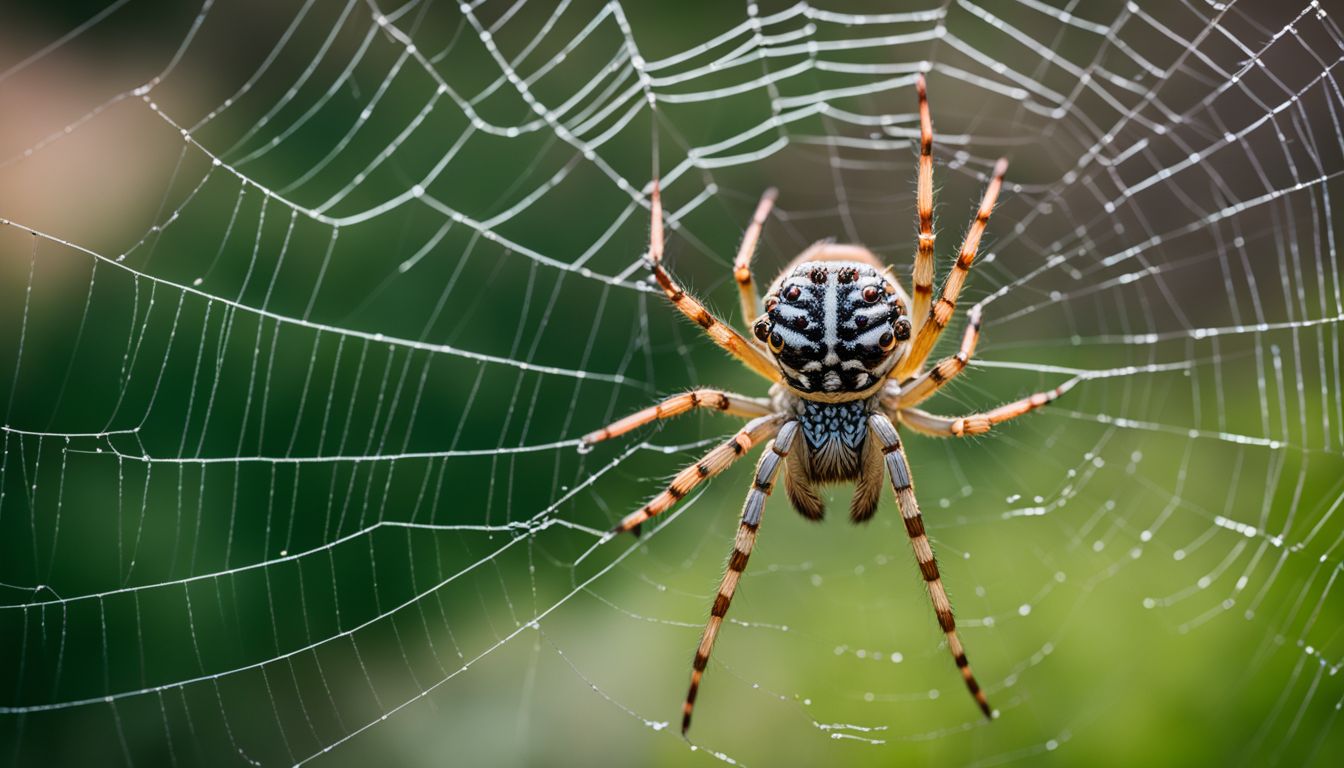
Spider mouthparts, known as chelicerae, play a crucial role in the feeding process of spiders. These structures, along with their fangs, help spiders to capture and immobilize their prey before consuming them.
The Role of Chelicerae in Feeding
Chelicerae are like a spider’s tool for eating. They grab hold of bugs and other food. Spiders can’t chew like we do, so the chelicerae are super important for getting their meals ready.
First, they poke their fangs into the prey to inject venom that starts to break down its insides. Then these mouthparts work like straws, sucking up all the liquid food.
After a spider uses its chelicerae to eat, it needs another way to make sure the meal is good for swallowing. That’s where digestive enzymes come in – but more on that next!
How Fangs Aid in Prey Capture and Venom Injection
Spiders use their strong fangs in a smart way to get their food. These fangs work like tiny needles that can go through the hard parts of insects and other small creatures. They have venom glands linked to them, so when they bite, they can quickly put venom into their prey.
This venom is powerful! It stops the prey from moving or running away.
The fangs are very important for spiders because they don’t have teeth to hold onto their food. Instead, the fangs grab and hold the creatures so spiders can eat them. When spiders catch something to eat, they use their fangs right away.
This makes sure their meal doesn’t escape and helps them stay safe as well.
The Digestive Process of Spiders
Spiders lack teeth and cannot chew their food, so they rely on their digestive enzymes to liquefy their prey for consumption. This allows them to extract the nutrients from the liquidized meal through their straw-like mouthparts.
Inability to Chew: Liquefying Prey for Consumption
Spiders can’t chew their food like we do. Instead, they release special digestive juices onto their prey to turn it into a liquid before sucking it up. These enzymes break down the prey’s body tissues, making them easier for the spider to consume.
Spiders don’t have strong jaws for chewing; they rely on this liquefying process to eat.
Now let’s delve into how spiders use their fangs to capture and inject venom when subduing their prey.
The Role of Digestive Enzymes
Spiders use digestive enzymes to break down their prey’s body. These enzymes, like chitinases and hexosaminidases, assist in digesting carbohydrates from the prey. Spiders apply these enzymes onto their prey to start breaking down the nutrients outside of their own bodies.
For instance, when tarantulas inject venom into their prey, they also secrete digestive enzymes that help break it down into a more easily digestible form.
By utilizing proteases and other potent digestive compounds contained within their venom, spiders can effectively liquefy and consume their prey even before bringing it back to their mouth for feeding.
Spider Bite Mechanics
Spiders use their fangs to subdue their prey with a quick and precise bite. The venom injected aids in immobilizing the prey, making it easier for the spider to consume.
How Spiders Subdue Their Prey with Bites
Spiders subdue their prey by using their venom-injecting fangs. The venom helps to paralyze the prey and begins the process of digestion. When a spider bites its prey, it injects venom through hollow fangs, which is how they immobilize insects like beetles and ants.
The injection of venom into their prey allows spiders to consume the liquefied insides of their victims, aiding in breaking down the tissues. This method saves energy for the spider as they do not have teeth to chew or masticate solid food.
Remember that after injecting venom, some spiders additionally release digestive enzymes into their prey, turning them into an easily consumable liquid meal.
The Significance of Venom in Prey Immobilization
Spider venom plays a crucial role in immobilizing their prey; larger quantities are injected into actively resisting prey to quickly immobilize and prevent injuries. It’s interesting that spider venoms can be adjusted based on factors like sex, life stage, and environmental conditions.
Some spiders even have specific toxins in their venom to capture their particular prey, showing the complexity and precision of this natural defense mechanism.
Comparing Spider Feeding Mechanisms to Other Arthropods
Spider feeding mechanisms, such as their chelicerae and fangs, differ significantly from other arthropods like insects with mandibles. Understanding these differences can provide insight into the unique predatory behaviors of spiders.
Contrasting Spider Chelicerae with Insect Mandibles
Spiders and insects have different mouth parts for eating their food.
- Spiders have chelicerae, which are like fangs that help them inject venom into their prey. Insects have mandibles, which are hard, tooth-like structures for biting and chewing their food.
- Chelicerae are external and used by spiders to immobilize their prey with venom. Mandibles in insects are internal and used for cutting and grinding food.
- Spiders cannot chew their food because they lack jaws and teeth like insects do.
- The feeding strategies of spiders, with their chelicerae, differ from those of insects with mandibles due to the unique mouthparts and feeding mechanisms each group has.
- Insects rely on bite forces generated by their mandibles, while spiders use their chelicerae to inject venom and subdue their prey during feeding.
The Ecological Importance of Spiders
Spiders play a crucial role in controlling pest populations, such as mosquitoes and caterpillars, which helps to maintain the balance of ecosystems. Their presence also contributes to pollination and serves as a food source for other animals in the food chain.
Benefits of Spiders in Controlling Pest Populations
Spiders are essential for controlling insect populations. They keep the number of pests in check, which is important for maintaining a healthy environment and preventing pest outbreaks. Here are some key benefits of how spiders help in controlling pest populations:
- Spiders act as natural pest control agents by preying on insects such as mosquitoes, caterpillars, and mites.
- By consuming herbivorous insects like caterpillars and butterflies, spiders contribute to maintaining a balance in the ecosystem.
- The presence of spiders helps reduce the need for chemical pesticides, promoting a more sustainable and environmentally friendly approach to pest management.
- Spiders play a significant role in preventing crop damage by feeding on agricultural pests like aphids and mites.
- Their predatory behavior helps in managing disease – carrying insects, contributing to public health by reducing the spread of diseases transmitted by pests.
- Spiders’ role as predators helps maintain the diversity and population sizes of other organisms within the ecosystem.
- Spider predation contributes to overall biodiversity conservation efforts by ensuring that certain insect populations do not become too abundant, thus maintaining a stable environment.
Fun Facts about Spiders (Optional Section for Potential Internal Link)
Spiders use silk not only for webs but also to create egg sacs.
Conclusion
In conclusion, spiders do have teeth, but they are quite different from human teeth. Their small and pointed teeth are located on their chelicerae. These unique mouthparts act as fangs for injecting venom and capturing prey.
Understanding spider anatomy can help us appreciate the fascinating way they feed and contribute to their ecological importance in controlling pest populations.
If you’re intrigued by spider biology, you might also enjoy discovering whether spiders can fart.
FAQs
1. Do spiders have teeth like humans do?
No, spiders don’t have teeth for chewing. Instead, they have fangs, called chelicerae, that they use to bite and inject venom into their prey.
2. Can all spiders harm people with bites or stings?
Most spiders can bite because of their fangs, but only a few like the black widow or brown recluse are dangerous to us. Spiders usually don’t sting; they catch food using their fangs.
3. What is a spider’s diet if they don’t chew food?
Spiders are mostly carnivorous and feed on insects like flies and sometimes small animals like lizards or frogs by injecting venom that turns the insides of their prey into liquid which they then suck up.
4. Why might I see a spider moving its mouth parts if it doesn’t eat solid food?
Spiders move their chelicerae which might look like jaw clenching but they’re not actually chewing; this movement helps them attack and hold onto prey before liquefying it to eat.
5. Are there any types of spiders that aren’t meat-eaters?
Yes! While most are meat-eaters (carnivorous), some jumping spiders may also munch on nectar from plants making them omnivorous — meaning they eat both plants and other creatures!
6. Is it true that some smaller creatures live off eating certain kinds of spiders?
Indeed, some critters make meals out of spiders such as spider wasps which hunt them down to feed their babies while others including birds, bats or even larger reptiles will often snack on these eight-legged arachnids too!

